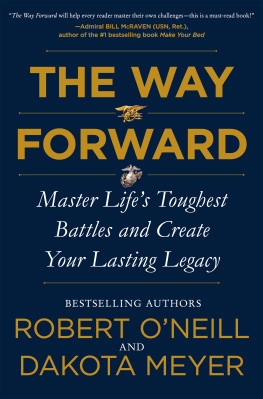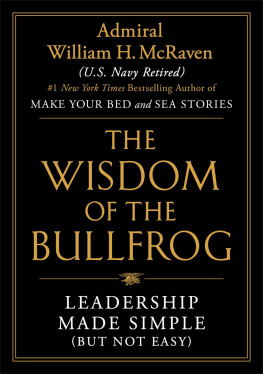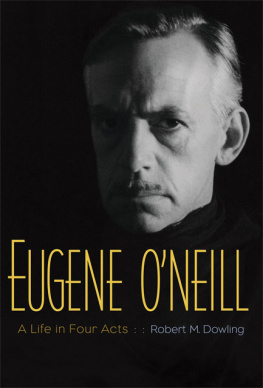Robert ONeill - The Way Forward: Master Lifes Toughest Battles and Create Your Lasting Legacy
Here you can read online Robert ONeill - The Way Forward: Master Lifes Toughest Battles and Create Your Lasting Legacy full text of the book (entire story) in english for free. Download pdf and epub, get meaning, cover and reviews about this ebook. year: 2022, publisher: HarperCollins, genre: Non-fiction. Description of the work, (preface) as well as reviews are available. Best literature library LitArk.com created for fans of good reading and offers a wide selection of genres:
Romance novel
Science fiction
Adventure
Detective
Science
History
Home and family
Prose
Art
Politics
Computer
Non-fiction
Religion
Business
Children
Humor
Choose a favorite category and find really read worthwhile books. Enjoy immersion in the world of imagination, feel the emotions of the characters or learn something new for yourself, make an fascinating discovery.
- Book:The Way Forward: Master Lifes Toughest Battles and Create Your Lasting Legacy
- Author:
- Publisher:HarperCollins
- Genre:
- Year:2022
- Rating:3 / 5
- Favourites:Add to favourites
- Your mark:
The Way Forward: Master Lifes Toughest Battles and Create Your Lasting Legacy: summary, description and annotation
We offer to read an annotation, description, summary or preface (depends on what the author of the book "The Way Forward: Master Lifes Toughest Battles and Create Your Lasting Legacy" wrote himself). If you haven't found the necessary information about the book — write in the comments, we will try to find it.
NATIONAL BESTSELLER
The Way Forward will help every reader master their own challengesthis is a must-read book! Admiral Bill McRaven, U.S. Navy (Retired) and author of the #1 New York Times bestseller Make Your Bed
American Sniper meets Make Your Bed in these life lessons from decorated United States service members and New York Times bestselling authors Robert ONeill and Dakota Meyeran in-depth, fearless, and ultimately redemptive account of what it takes to survive and thrive on battlefields from Afghanistan and Iraq to our daily lives, and how the perils of war help us hold onto our humanity.
Rob ONeill and Dakota Meyer are two of the most decorated and recognized US service members: ONeill killed the worlds most wanted man, Osama bin Laden, and Meyer was the first living Marine to receive the Medal of Honor since the Vietnam War. But beyond their actions and courage in combat, ONeill and Meyer also have much in common in civilian life: they are both sought-after public speakers, advocates for veterans, and share a non-PC sense of humor. Combining the best of military memoirs and straight-talking self-help, The Way Forward alternates between ONeills and Meyers perspectives, looking back with humor at even the darkest war stories, and sharing lessons they learned along the way.
The Way Forward presents ONeill and Meyers philosophy in combat and life. This isnt a book about the glory of war and combat, but one about facing your enemies, some who are flesh and blood and some that are not: Your thoughts. Your doubts. Your boredom and your regrets. From Robs dogged repetition at the free throw line of his childhood basketball court to Dakotas pursuit of EMT and firefighter credentials to aid accident victims, these two American heroes turn their experiences into valuable lessons for every reader.
Gritty and down-to-earth, ONeill and Meyer tell their stories with candor and vulnerability to help readers handle stress, tackle their biggest obstacles, and exceed their expectations of themselves, while keeping lifes battles in perspective with a sense of humor.
Robert ONeill: author's other books
Who wrote The Way Forward: Master Lifes Toughest Battles and Create Your Lasting Legacy? Find out the surname, the name of the author of the book and a list of all author's works by series.






